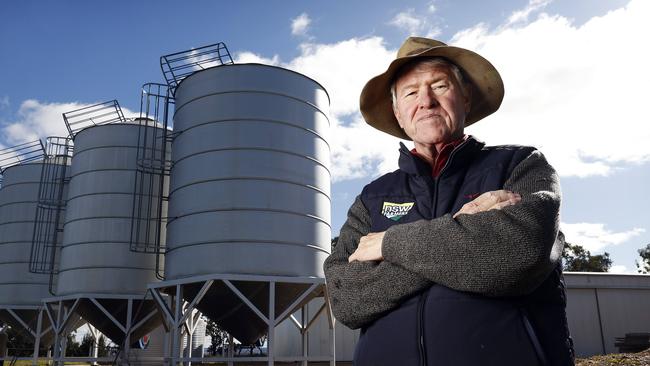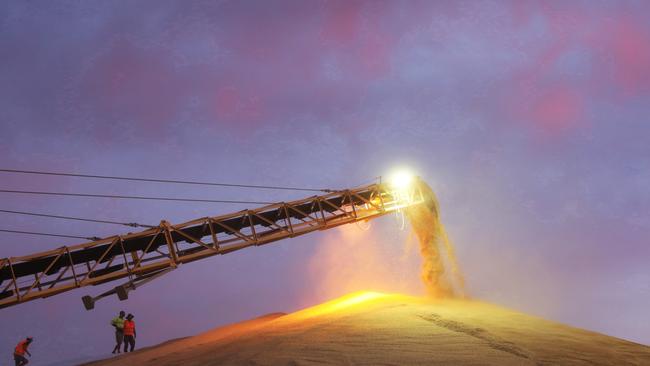Harvest 2022: Australian grain growers are selling grain below cost of production
Australian grain growers face losing hundreds of thousands of dollars by selling below cost to pay off debts.
Growers are being forced to sell grain due to cash flow concerns and at the same time prices at the silos have dropped, in some instances, below the cost of production.
Grain industry leaders say landholders are facing potential losses of hundreds of thousands of dollars.
NSW Farmers president Xavier Martin said farmers who have been through drought, mouse plagues and flooding in the past three years didn’t have a financial buffer to defer selling until prices increased.
“Growers are really under pressure,” Mr Martin said.
“As harvest progresses, I’m getting more and more grain producers saying to me that they’ve worked really hard all year through flooding and really expensive inputs and dodged all the potholes and eventually found a site that would take their produce, and they’re finding that what they’re offered … is just so far below global prices.
“It’s not just 5 or 10 per cent below, it’s 20 or 30 per cent below,” Mr Martin said.
“They’re finding themselves with hundreds of thousands of dollars of losses. They’re quite emotional.”

Australian grain prices are at historically high levels, but have begun to fall with a bumper harvest in full swing.
Australian Premium White wheat delivered to Melbourne has fallen $90/tonne to $440/tonne since November 16.
Growers who invested record amounts in inputs this year as the war in Ukraine drove vital products like urea to record highs would struggle to break even financially, Mr Martin said.
NSW Farmers has renewed calls for an Australian Competition and Consumer Commission inquiry into the grain trade, which prime minister Anthony Albanese committed to consulting industry groups about before the federal election.
“Farmers don’t begrudge middlemen making two, three or five per cent return on risk, but what is it about this 20 to 30 per cent margin? We’re calling for a full inquiry,” Mr Martin said.

Grains Research and Development Corporation southern panel chairman Andrew Russell said he expected growers to hold onto what stock they could.
“Growers will sell what they need to be able to appease the cash flow requirements. But they’ll potentially hold on to whatever they can and hope that the prices firm up,” he said.
According to a report by Rural Bank released last week, cereal and oilseed prices were expected to remain steady over the coming six months.
APW wheat prices delivered to Geelong would average $400/tonne through to June 2023, with potential large swings in response to developments in the Russia-Ukraine conflict, according to the report. Feed barley, delivered to Port Adelaide, was predicted to remain at above-median prices of $300-$350/tonne.
Canola, delivered to Kwinana, was expected to fall as a bumper harvest came online before rising to about $810/tonne in June.





